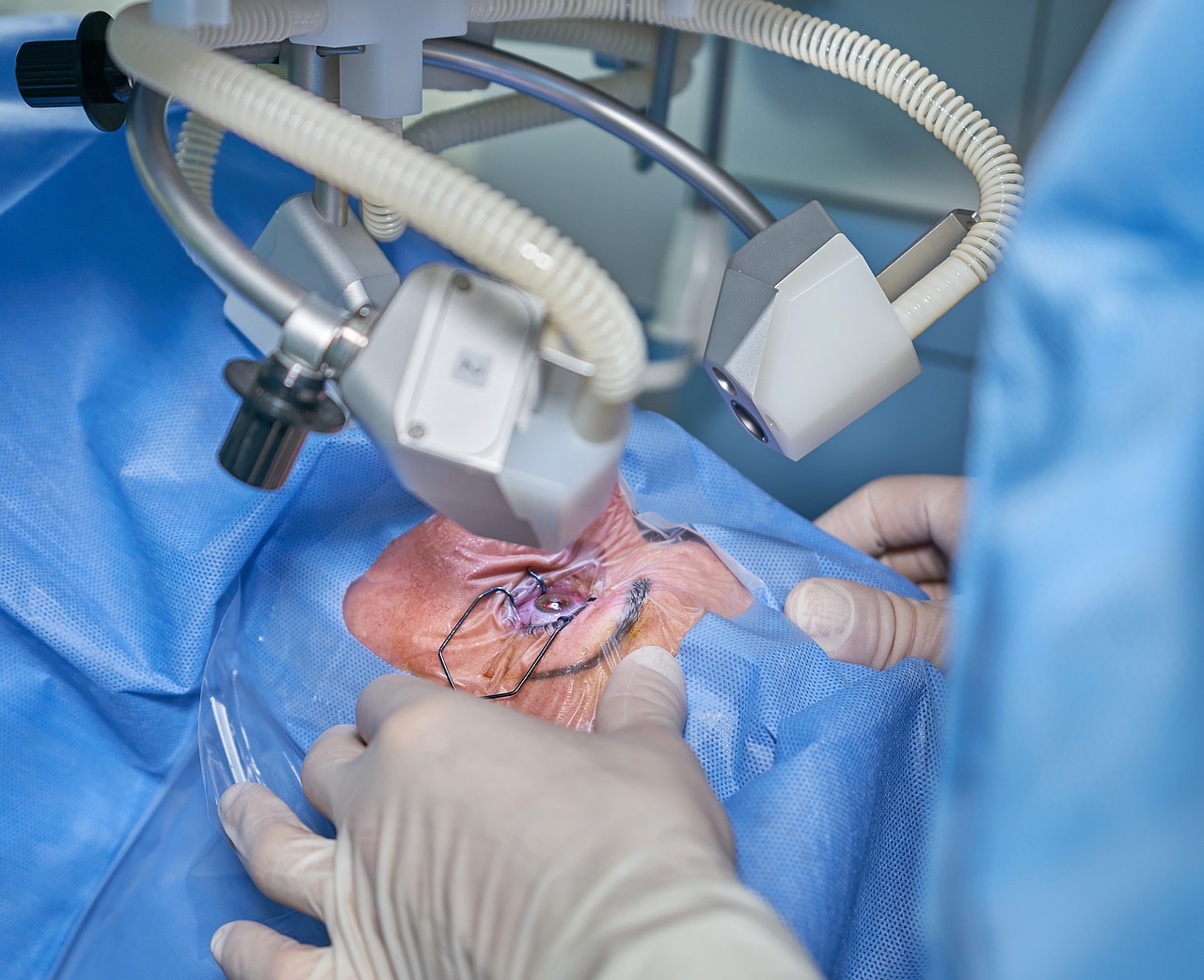The Visionary Revolution: Exploring The Evolution And Advancements In Cataract Surgery

3 min read
Cataract surgery stands as one of the most transformative medical procedures in the history of ophthalmology. From ancient techniques dating back thousands of years to modern innovations utilizing cutting-edge technology, the journey of cataract surgery reflects both the advancement of medical science and the quest to restore vision and improve quality of life. In this comprehensive exploration, we delve into the evolution, techniques, advancements, and future prospects of cataract surgery, shedding light on its profound impact on millions of individuals worldwide.
Understanding Cataracts and Their Impact:
Cataracts, characterized by the clouding of the eye's natural lens, are a leading cause of vision impairment globally, particularly among older adults. The gradual development of cataracts can result in blurred vision, sensitivity to light, and difficulty with daily activities such as reading and driving. Left untreated, cataracts can significantly diminish quality of life and independence, underscoring the importance of timely intervention through cataract surgery.
Evolution of Cataract Surgery:
The history of cataract surgery traces back thousands of years, with evidence of rudimentary procedures found in ancient civilizations such as Egypt and India. Early techniques involved manual extraction of the cataractous lens using crude instruments, often resulting in high rates of complications and limited visual outcomes. The advent of intraocular lens (IOL) implants in the 20th century revolutionized cataract surgery, allowing for improved refractive outcomes and reduced reliance on thick glasses or contact lenses post-operatively.
Modern Techniques and Advancements:
Contemporary cataract surgery has evolved into a highly refined and minimally invasive procedure, thanks to innovations in surgical techniques, instrumentation, and intraocular lens technology. The introduction of phacoemulsification, a method of breaking up the cataract using ultrasonic energy, has replaced older manual techniques, leading to smaller incisions, faster recovery times, and improved safety profiles. Furthermore, the development of advanced IOLs, such as multifocal and toric lenses, has enabled surgeons to address pre-existing refractive errors and provide patients with enhanced visual outcomes and reduced dependence on corrective eyewear.
Surgical Procedure and Patient Experience:
Cataract surgery typically begins with pre-operative assessments to evaluate the patient's ocular health, determine the severity of the cataract, and select the appropriate IOL. On the day of surgery, patients undergo a brief outpatient procedure performed under local anesthesia. The surgeon creates a small incision in the cornea, inserts a tiny probe to break up and remove the cataractous lens, and implants the selected IOL to restore clear vision. The entire process usually takes less than 30 minutes per eye and is associated with minimal discomfort and rapid visual recovery.
Complications and Risk Management:
While cataract surgery is considered a safe and effective procedure, certain complications can arise, albeit rarely. These may include infection, inflammation, posterior capsular opacification (PCO), and intraocular lens dislocation. Surgeons employ various strategies to mitigate these risks, such as using sterile techniques, administering prophylactic antibiotics, and performing thorough post-operative monitoring. Patient education and informed consent also play crucial roles in minimizing complications and ensuring optimal surgical outcomes.
The Role of Technology in Cataract Surgery:
Advancements in technology have significantly enhanced the precision, safety, and outcomes of cataract surgery. Innovative tools such as femtosecond laser-assisted cataract surgery (FLACS) enable surgeons to automate certain steps of the procedure, such as creating corneal incisions and fragmenting the cataract, with unparalleled precision and reproducibility. Intraoperative imaging systems and advanced diagnostic modalities further aid surgeons in visualizing and assessing ocular structures, facilitating personalized treatment plans and optimized surgical outcomes.
Addressing Global Challenges and Disparities:
Despite remarkable progress in cataract surgery, access to quality eye care remains a significant challenge in many parts of the world, particularly in low- and middle-income countries. Barriers such as lack of infrastructure, trained personnel, and financial resources often prevent millions of individuals from receiving timely diagnosis and treatment for cataracts. Initiatives aimed at increasing awareness, expanding healthcare infrastructure, and implementing cost-effective interventions are crucial in addressing these disparities and ensuring equitable access to sight-saving interventions for all.
Future Directions and Innovations:
The future of cataract surgery holds promise for continued innovation and refinement, driven by advances in technology, surgical techniques, and personalized medicine. Emerging trends such as artificial intelligence (AI), regenerative medicine, and nanotechnology hold the potential to revolutionize diagnosis, treatment, and outcomes in cataract surgery. From predictive analytics for patient selection to bioengineered intraocular implants, the landscape of cataract surgery is poised for transformation, offering hope for improved visual outcomes and quality of life for millions of individuals worldwide.
Conclusion:
In conclusion, cataract surgery stands as a testament to the remarkable progress and innovation achieved in the field of ophthalmology. From its humble beginnings to the cutting-edge techniques and technologies of today, cataract surgery has transformed the lives of countless individuals, restoring vision, and enhancing quality of life. As we look to the future, continued investment in research, education, and access to care will be essential in addressing global challenges and advancing the frontiers of cataract surgery, ensuring that the gift of sight remains within reach for all.


